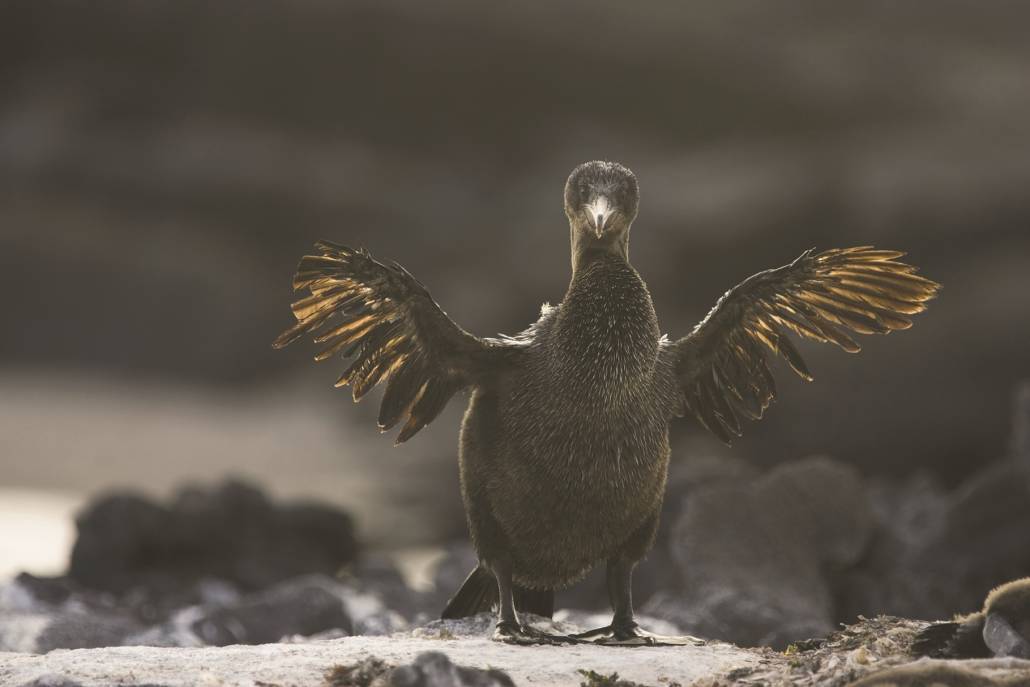The Galapagos flightless cormorant (Phalacrocorax harrisi) is a great example of the adaptability of the species in situations where they have to compete for food. The cormorant can grow up to a meter high and weigh up to 5 Kilogrammes. They have unlearned flying and picked up fishing instead! Its current wings are one-third of the size it requires to fly. The cormorants are endemic to the Galapagos Island and are considered to be one of the rarest birds in the world. They live on the rocky coasts of two Galapagos Islands-
- Isabela Island (North and West)
- Fernandina Island (East coast)
The plentiful supply of fishes in the western area of the Galapagos archipelago has made this area very attractive to the cormorants. To plan your trip better, check out our Galapagos Islands monthly animal activities chart.


